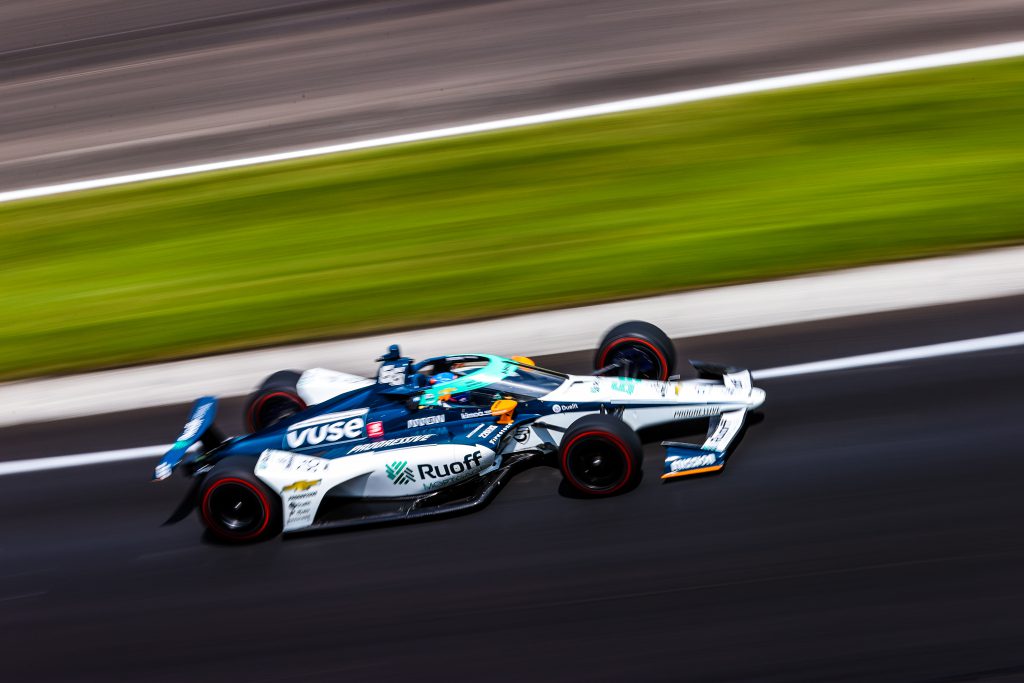Up Next

On-track action in the build-up to the Indianapolis 500 is back and Fernando Alonso is already one step ahead of last year.
That’s not because his experience of Dakar is brilliantly transferable to IndyCar – but because he can’t be bumped out last minute in embarrassing fashion in qualifying as there are only 33 entries in the Indy 500 this year!
Qualifying was never going to be an issue this year, even if there was a Bump Day. The Schmidt Peterson team mostly remains intact from before McLaren joined for 2020, and the addition of the input of an F1 team has only furthered its cause.
Alonso is working with previous event winner and Sebastien Bourdais’ title-winning Champ Car engineer Craig Hampson this year, and they got off to a strong start. Hampson is new to the team, but has been with it from the start of the year and will have no problem working with someone as talented as Alonso.
Having not driven on an oval since last year’s 500, Alonso was mandated to take part in a refresher session, which meant while the ‘veterans’ got two hours practice in the morning, Alonso had to wait for a second session to get out and had to complete a course on his return.
He dealt with the refresher – mainly completing laps within a mandated average speed window for a designated period of time – in rapid fashion, and when the shackles were off he went fourth-quickest in the final joint two-hour session with all cars on track. He was later bumped down to fifth by Ryan Hunter-Reay, but still ended the day as the top Chevrolet runner.
“Today was good,” said Alonso on his return to the Brickyard.
“We had the day that we wanted, which was a clean day with no issues and trouble-free. In the morning, we got up to speed with the refresher and in the afternoon we cut it a bit short to work on the car.
“We may have potentially missed one run in traffic but it’s nothing we can’t make up tomorrow. We are working step by step, improving the car a little bit each time. We are working on the balance and getting used to the speed again, more in my case than the team.
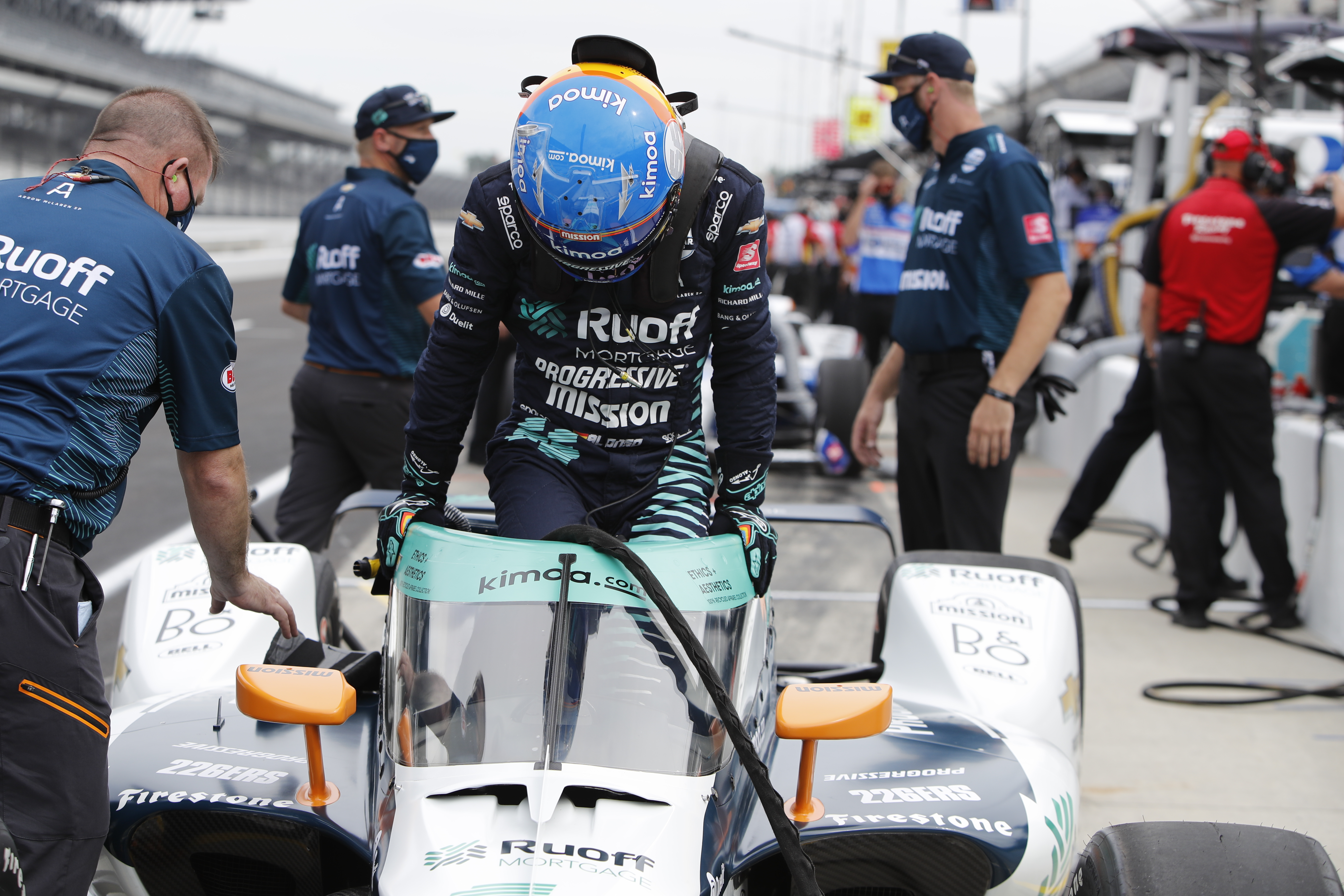
“The team was maybe more ready than me on this first day. We will grow together and got some good mileage today.
“We have a good understanding of the car and will hopefully have a good setup ready to go tomorrow.”
It’s hard to read into any of the running from Wednesday due to two major factors. One is that the cars testing have already qualified, so some focused on qualifying set-ups early then moved on to race work while some did the opposite.
Many worked completely on race-runs knowing that they’re guaranteed to make the race, so a varying mix of strategies played out. Teams also trialled different parts, demonstrated by an unusual unpainted black front wing Scott Dixon used momentarily.
The second is the aerosceen. While the teams are familiar with it from the early races of the delayed 2020 season, it’s still new to Indianapolis, and it was the first time drivers got to dice in traffic with dirty air with the device attached. It alters airflow over the car, so it was a big talking point for drivers in terms of how close you would be able to follow in turbulence. The early feedback from the drivers was positive.
With the added weight it brings, teams not only need to find set-up alterations from last year, they need to work on understanding how it affects tyre wear as well. It has already provided plenty of headscratching for teams in IndyCar this year.
Alonso said the screen was “not too bad” despite rising temperatures in the cockpit, which IndyCar regulars are already familiar with.
One thing we did see was an extended absence from the track for Alonso and his new white grey and green colour-scheme car – a break from the usual ‘McLaren papaya’ – in the final session.
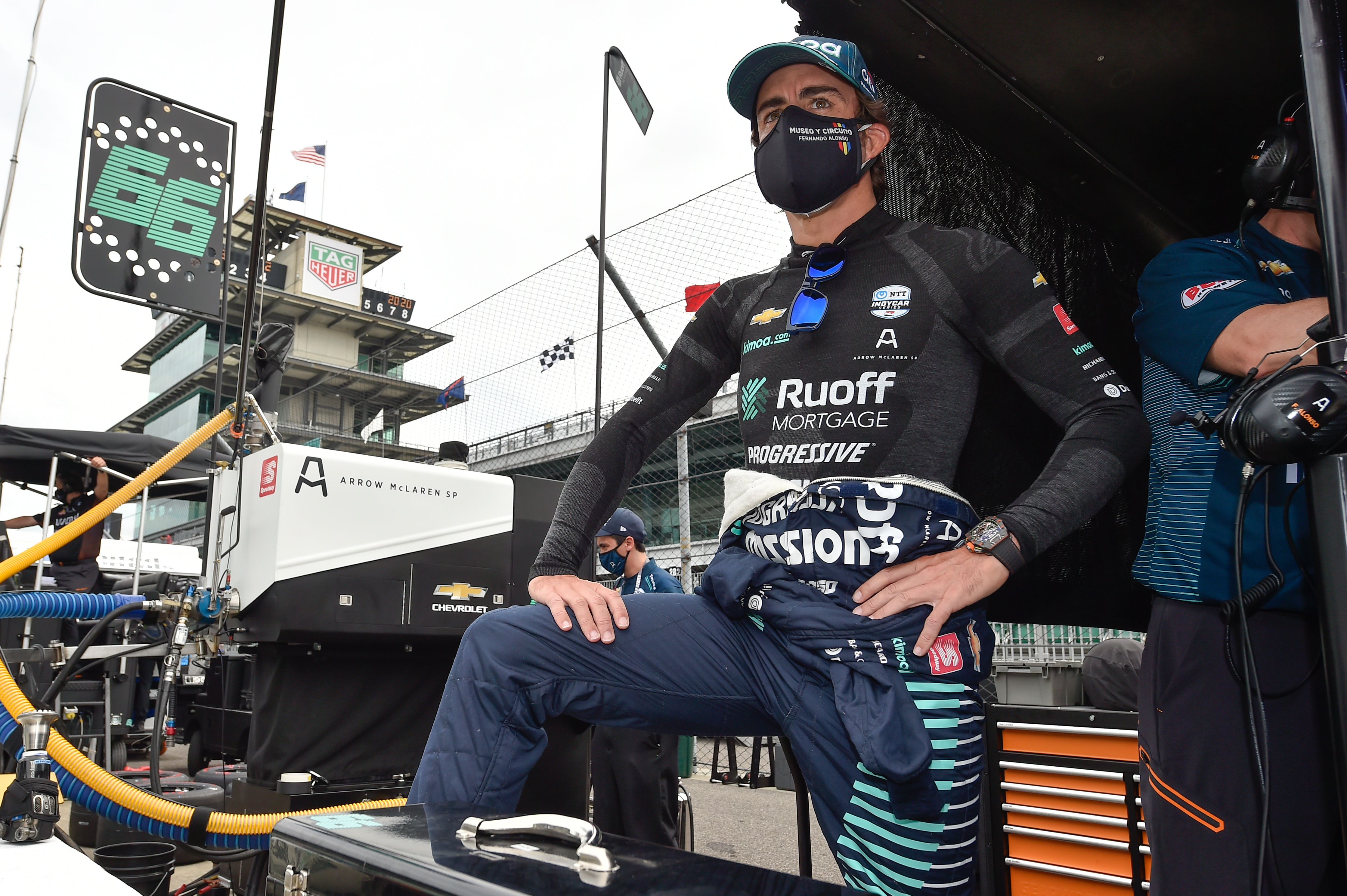
It was to work on set-up, but perhaps it does show that the team and Alonso were confident to cut track-time already shortened by being filtered into the refresher session, a sign that the team is relatively happy with where it’s at. Alonso casually stated the team would make up the time the next day.
He completed 47 laps under the eyes of Big Brother in the refresher, and then 28 in practice later on before taking the break for set-up changes.
The one-lap pace on Wednesday has little bearing on what to expect though, and neither does a 30-lap average.
It was a @Team_Penske 1-2-3 in best 30-lap average speed at @IMS on opening day.@12WillPower led @JosefNewgarden and @H3lio. #INDY500 pic.twitter.com/15u81McLAT
— IndyCar on NBC (@IndyCaronNBC) August 12, 2020
The time showed above is the fastest single lap completed by that driver in the session in what is a quite confusing graphic. But they are ranked on pace over the stint.
Without doubt one of, if not the best-looking car on track in terms of its ability to slipstream up to and pass competitors and carry speed mid-corner was last year’s winner Simon Pagenaud. However, he was 12th in terms of the fastest time set, and didn’t appear on the 30-lap average top 10. It shows that you can’t read too much into it. A bit like pre-season testing in Formula 1.
Additionally, the man who fought Pagenaud for last year’s win and was victorious in 2016, Alexander Rossi, is believed to have recorded the best speed without a tow at 221.9mph – but only scored the 18th-quickest time, adding to the notion that reading into times at Indy is tough.
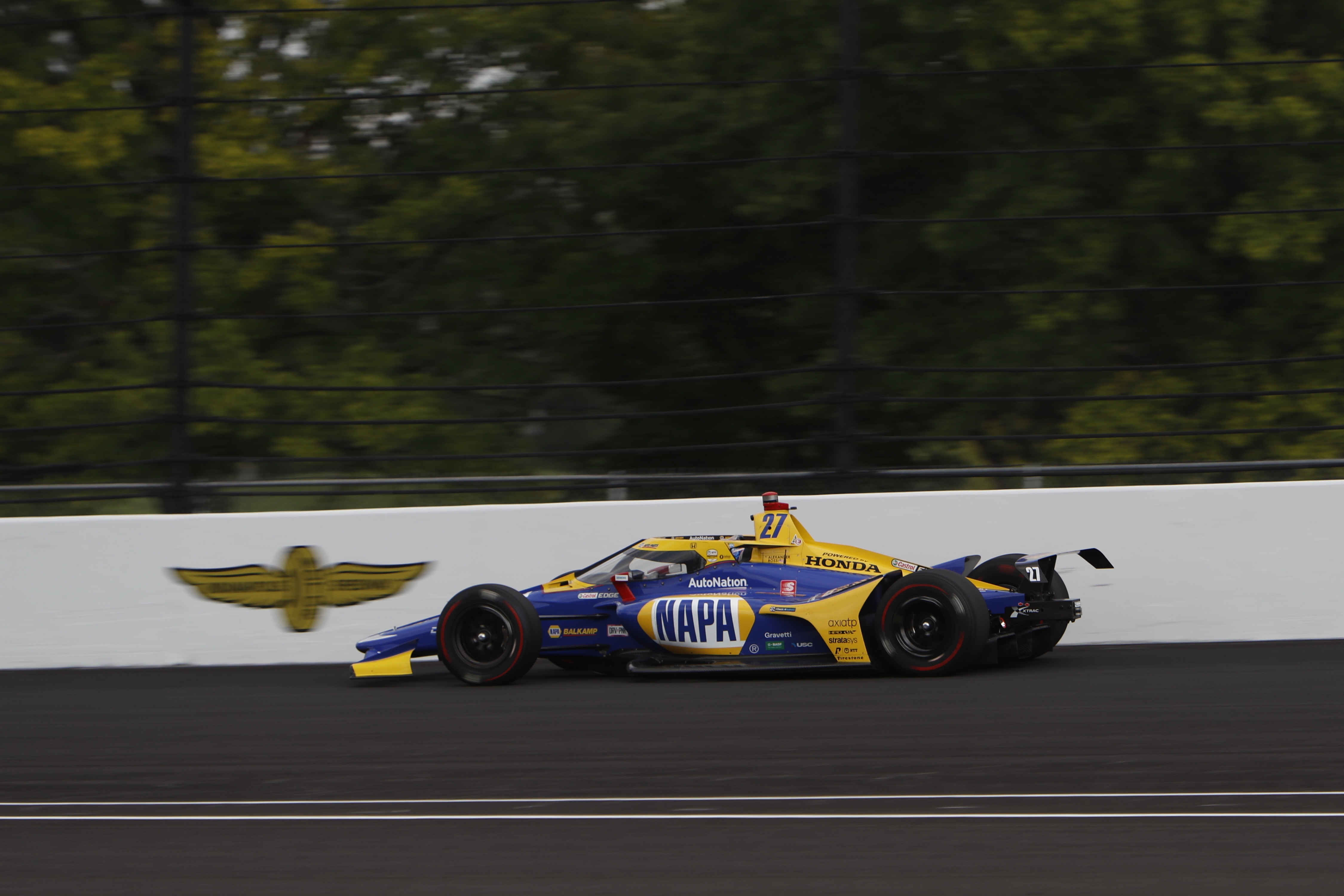
By the end of Wednesday, most teams should have zoned in on a base set-up. They’ll hone that on Thursday morning and then in the afternoon we should get some proper race runs. That is when we’ll have a better idea of who to look for come the 500 and we’ll be keeping a close eye on Alonso’s pace.
Alonso should be one of those focusing on race runs, as qualifying is less important. For two reasons actually, one being the aforementioned 33-car grid and the second being it wouldn’t have been a problem for this team anyway.
As SP, it took the pole in 2016 with James Hinchcliffe, and has experience of working with an array of drivers including ex-Formula 1 men, having given Marcus Ericsson his Indy debut last year. He had been the leading rookie last year but locked-up and crashed entering pit road.
Don’t forget Alonso’s got to be extra motivated this year knowing he won’t return in 2021 or 2022
Hinchcliffe did fail to qualify for the 2018 Indy 500 with Schmidt Peterson, but two rain delays meant the track continually improved after Hinchcliffe’s initial runs, and on his last attempt he had a tyre vibration he described as “violent”. The team’s other two cars – driven by Robert Wickens and Jay Howard – qualified comfortably that year.
Most of the key players from SP remain, but it has added Hampson, and crucially it has taken on the know-how of McLaren, which has also included the transition of Lando Norris’s race engineer Andrew Jarvis into the IndyCar programme for 2020. He’s not one of the English-based people working on the IndyCar programme, but rather he’s fully transitioned to the team in America.
OK, McLaren doesn’t have vast Indianapolis experience, but its engineering prowess is befitting of an F1 team.
Both Gil de Ferran – the 2003 Indy 500 winner heading up the McLaren side of the partnership – and Zak Brown were coy on how many McLaren engineers were working on IndyCar come the Indy 500, or what exactly they were contributing.
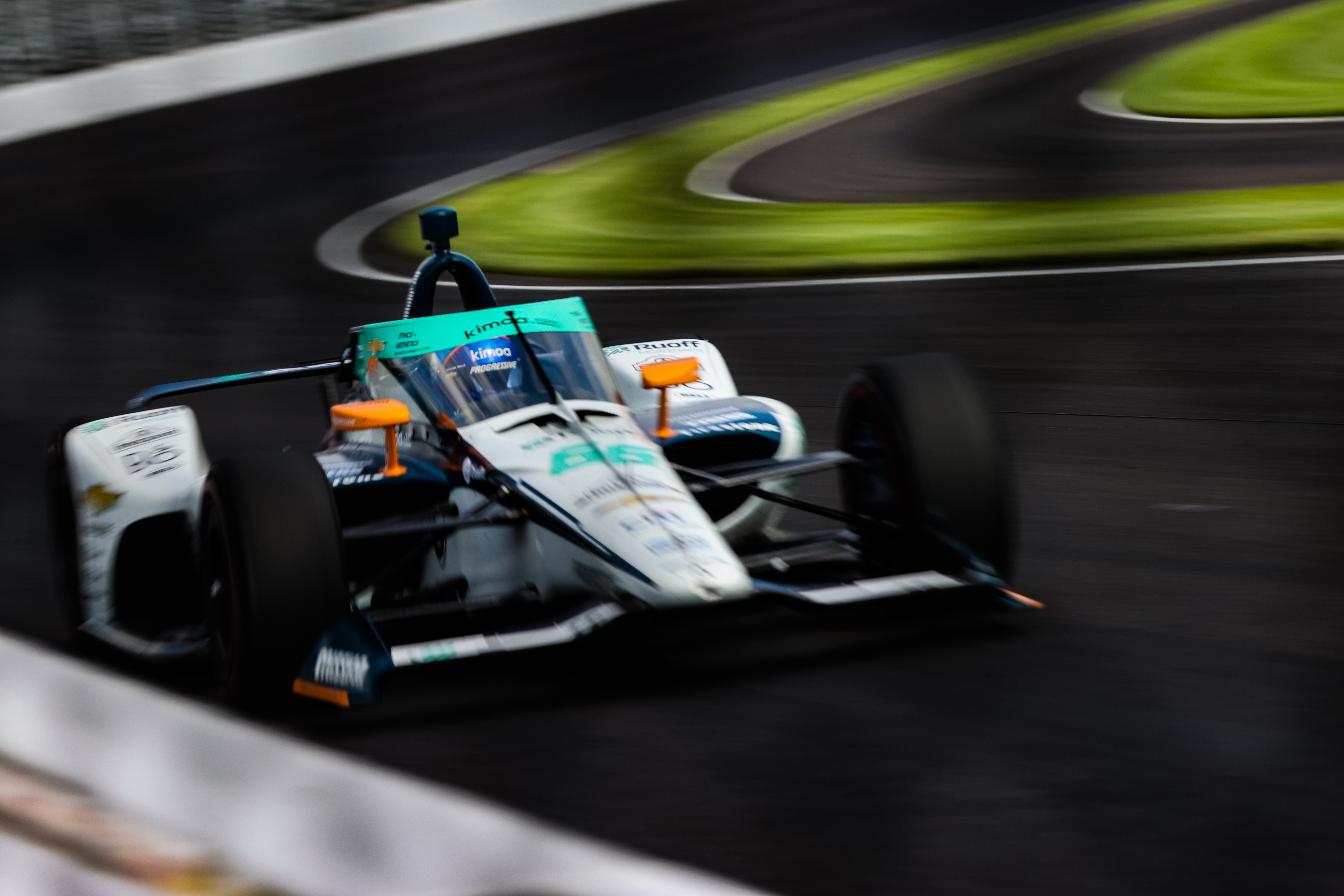
De Ferran – who will work with Alonso again at Indy, having helped him bed in during his previous attempts – outlined McLaren’s side of the deal in more detail when asked by The Race on Tuesday: “I’ve got to be careful with what I say because we don’t want to give away our secrets.
“What we bring mostly to the table is depth of engineering. Ultimately we have a lot of systems and technologies that have been developed over many decades across in the UK. A lot of these technologies are also applicable to frankly any form of motorsports, but particularly here in IndyCar. We are walking on a long road together trying to lift the tide here.”
The team’s managing director Taylor Kiel, who has overseen an incredible start to the season, added: “We’ve touched on it before, but I’m a huge proponent of new thoughts, new ideas, different ways of looking at solving a problem.
“Our two organisations have come together and meshed really well to solve problems that we face every day but with a new outlook and some fresh perspective. That in itself has been a huge help for us here in 2020.”
Finally, Brown added: “As Gil has said, we want to be a little bit careful with giving too much detail. What I would say is it’s a good, strong handful of fully dedicated, 100% IndyCar [people], that have their own space at the MTC [McLaren Technology Centre, UK], then they have a variety of tools and additional people they can pull on.”
There is an element of surprise at AMSP at its early-season pace. Indy Lights champion Oliver Askew and his predecessor Patricio O’Ward have both scored podiums at the start of the season, and both enter the Indy 500 as rookies as O’Ward failed to qualify in a Carlin effort last year.
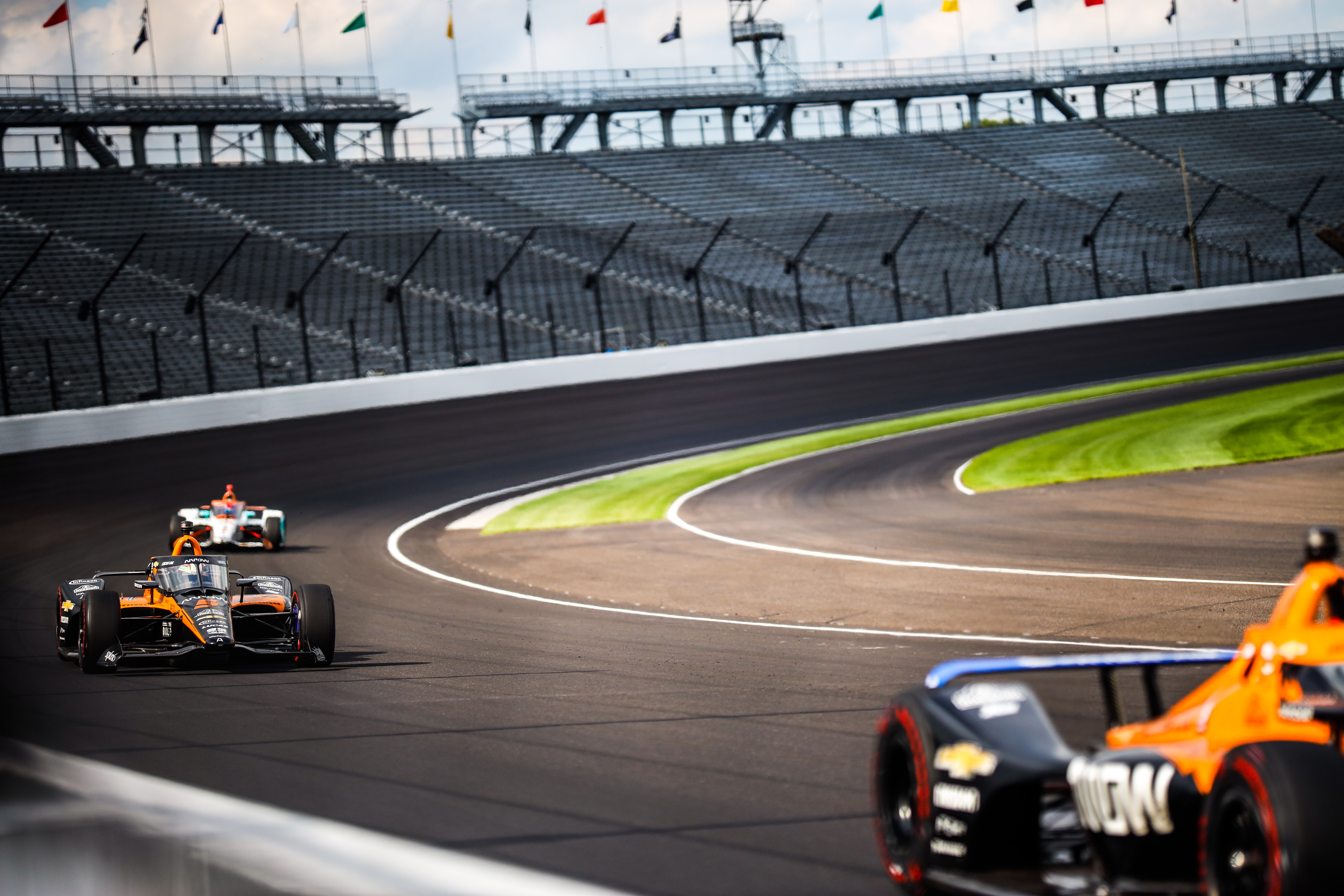
That Alonso is starting this race with two rookie team-mates is perhaps the only considerable downside of this deal, but even then, it isn’t a win-busting negative. Askew won here in Indy Lights last year and has impressed with his methodical approach not dissimilar to Alonso, while O’Ward did everything but make the race last year and isn’t an eyes-wide-open rookie. He’s also worked with some top personnel in his very short career and brings a lot of knowledge to the table for his age.
Even if Alonso does get down a rabbit warren in terms of set-up and feels his inexperienced team-mates don’t understand or aren’t able to help, there’s enough Indy 500 experience in the team to solve the problem.
It was always going to be a different Indy 500 for Alonso this year. He was always going to qualify with a team that is capable of top 10s before you add Hampson and the McLaren prowess, and was always going to be competitive.
Alonso’s fifth-fastest time in the afternoon shows he’s ready to go this year, and we know from the past that his preparation is always meticulous. Don’t forget Alonso’s got to be extra motivated this year knowing he won’t return in 2021 or 2022 owing to his Renault F1 deal.
There’s fine-tuning to be done to work out where Alonso stacks up. But all roads point to a successful if truncated Wednesday, and Thursday’s running should paint a much more accurate picture of the whole field, including Alonso.
Practice continues at 1100hrs-1700hrs ET at Indianapolis. The Race will bring you reports, features and analysis throughout practice, qualifying and the race.

